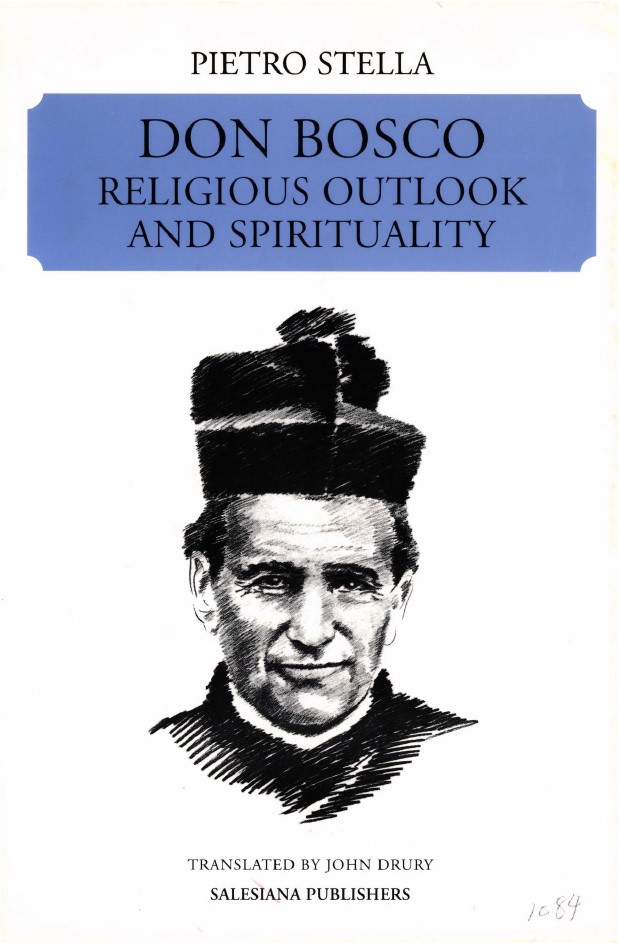The passage introduces two types of historical reconstruction linked to the figure of Don Bosco: the religious outlook and spirituality. The religious outlook refers to the way Don Bosco perceived his relationship with God and developed a personal approach to action and involvement in history. Spirituality concerns the specific way in which he conceived Christian perfection and sought to realise it.Don Bosco centred his life on the concept of redemptive salvation in the Catholic Church as the sole repository of the means of salvation. His educational response to the call of the poor and abandoned youth was guided by kindness and charity. The motto ‘Da mihi animas, caetera tolle’ represents the synthesis of Don Bosco’s aspirations, indicating his exclusive commitment to the salvation of souls. In summary, the passage explores the core of Don Bosco’s religious vision and spirituality, emphasising his commitment to the salvation of souls as the central element of his life and mission.
CONTENTS
- Abbreviations Used in the Notes
- Preface to Volume II
- Preface to the English Edition
- Editor’s Note
- I – GOD: CREATOR AND LORD
-
- Knowledge of God
- Don Bosco and traditionalism
- God in Don Bosco’s own life
- II – THE HUMAN BEING
-
- The soul
- The body
- The heart
- III – SIN
-
- Corruption of the heart
- Creatures after sin
- Sin and the world in Don Bosco’s ascetical approach
- IV – HISTORY AND SALVATION
-
- Don Bosco’s general view of the history of religion
- The history of Italy
- Human history as documentary proof of God’s dominion
- Literary borrowings and inner convictions of Don Bosco
- Nineteenth-century society between religion and revolution
- Conservatism up to 1848
- The Neo-Guelph moment
- Antiradical and anti-Protestant sentiments after 1848
- The Roman question
- Intransigent mentality and practical flexibility
- The social question
- Excursus
- V – JESUS CHRIST
-
- Jesus in the Eucharist
- Jesus Christ as judge
- Jesus as example
- Jesus as Divine Savior
- VI – THE CHURCH
-
- Attachment to the Catholic Church
- The outlines of ecclesiology: the Church and salvation
- The Church: its features and its pastors
- The Church and holiness
- The Church victorious
- VII – THE VIRGIN MARY
-
- The initial elements of Don Bosco’s Marian piety
- Mary and salvation
- The Immaculate Conception
- Mary Help of Christians
- VIII – THE LAST THINGS
-
- Death and the hereafter in Don Bosco’s life
- Heaven
- Hell
- IX – HAPPINESS AND SALVATION: HUMAN AND CHRISTIAN YEARNINGS
-
- Happiness and religion
- The false happiness of the wicked
- The sufferings of the just and the wicked in this life
- Young people and eternal salvation
- What giving oneself to God early means
- X – HOLINESS AS AN IDEAL FOR YOUNG PEOPLE
-
- Dominic Savio: the ideal realized
- The easiness of becoming saints
- Valentine: the ideal frustrated
- Don Bosco and the catechetics of sanctity in his milieu
- Don Bosco and the spiritual tradition on Christian holiness
- XI – THE PRINCIPAL VIRTUES FOR YOUNG PEOPLE
-
- Obedience
- Its importance in Don Bosco’s milieu
- The principal virtue for young people
- Theological motivations and experiential data
- Obedience and the free initiative of youth
- Purity
- Data on Don Bosco’s attitude from youth to adulthood
- Cultural and literary derivations
- Don Bosco and the morals of his time
- Circumstances affecting Valdocco
- Educating young people in purity
- Overcoming temptations
- Specific educational problems between puberty and marriage
- Obedience
- XII – PRAYER, SACRAMENTS, AND RELIGIOUS OBSERVANCES
-
- Devotions and observances in the Turin countryside and Asti uplands in the first half of the nineteenth century: introductory remarks
-
- Religious observances and data on spiritual aristocracy among the common people
-
- Genuine religious practices amid folklore and superstition
- Methods of religious practice proposed to the faithful
- Socioeconomic factors affecting religious practice
- Religious observances in crisis in Turin and Piedmont from 1850 on
- Signs of renewal in religious practice
- The campaign for frequent Communion
- Practices of piety in Valdocco
- Confession
- Frequent communion
- Devotions, pious exercises, liturgy
- Devotions at the Oratory
- Yearly retreats and the monthly Exercise for a Holy Death
- The taste for prayer and sincere devotion
- Religious associations
- Excursus
- XIII – THE SALESIANS AS A NEW BREED OF RELIGIOUS FOR THE SALVATION OF YOUNG PEOPLE
-
- Socio Religious problems of the clergy
- Salesians for the regeneration and salvation of society
- The sense of family
- The charism of wondrous deeds and results
- Salesian religious principles and practices
- Ascetical and charitable aims
- Practical training and formation for Salesian life
- Vocations, vows, and eternal salvation
- Obedience, chastity, and poverty
- Manifestations
- Practices of piety
- Common life
- The image of the Salesian in biographies and obituaries
- Excursus A
- Excursus B
- XIV – THE EDUCATIONAL SYSTEM OF DON BOSCO
-
- Foreshadowings of “The Preventive System” in Don Bosco’s writings (1844-1877)
-
- The Preventive System in Don Bosco’s cultural context and milieu
-
- Values and limitations of Don Bosco’s treatise
-
- Other documents on his educational system
-
- Religious elements in Don Bosco’s educational system
- XV – EXTRAORDINARY MATTERS
-
- Mysticism
- Miracles
- Knowledge of hidden things
- Legend
- Don Bosco and the extraordinary
- CONCLUDING REMARKS
-
- Appendixes
- Key to English Titles Used for Don Bosco’s Works
- Cross-Reference of Don Bosco’s Italian Titles to English Key
- Selected Bibliography
- Indexes
- Appendixes
Reference time period: 1815 – 1986
P. Stella, Don Bosco, Religious outlook and spirituality, Salesiana Publishers, New Rochelle (NY), 1996.
